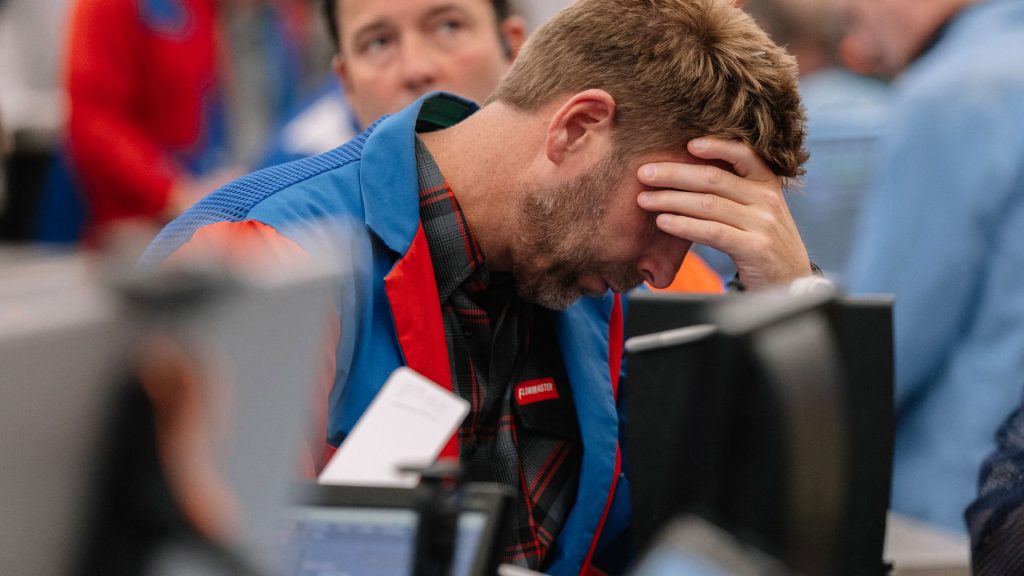Investors are currently facing growing concerns regarding the impact of President Donald Trump’s tariff policies on the stock market, as highlighted by Cboe Global Markets’ chief volatility expert, Mandy Xu. The CBOE Volatility Index, which gauges stock market volatility for the upcoming 30 days, has dropped nearly 50% from its peak of 60.13. Despite the recent rebound in equity prices, Xu warns that market fluctuations may not be over, indicating that the broader economic outlook remains uncertain.
| Article Subheadings |
|---|
| 1) Current State of the Stock Market |
| 2) Insights from Mandy Xu |
| 3) Market Reactions to Tariff Policies |
| 4) The Role of Treasury Yields |
| 5) Investor Sentiment and Future Outlook |
Current State of the Stock Market
The stock market has been experiencing significant fluctuations lately, with the CBOE Volatility Index showcasing this instability. Investors are currently seeing this index drop almost 50% from a recent height, marking a significant turnaround after an unsettling period. The drop in volatility indices usually suggests a stabilizing market, but experts caution that this may not reflect the underlying risks accurately. As of the most recent closures, the S&P 500 index stood at 5,405, suggesting some recovery in equity values, but this does not entirely alleviate concerns regarding broader economic conditions.
Insights from Mandy Xu
In a recent appearance on CNBC’s “Fast Money,” Mandy Xu, who leads the derivatives market intelligence department at Cboe Global Markets, expressed concerns over the current market trajectory. She emphasized that the macroeconomic outlook is fraught with uncertainty, suggesting that potential risks from tariff policies have not yet been fully integrated into stock prices.
“The macro outlook is a lot more uncertain going forward than what is priced into the equity market right now,”
Xu stated, indicating that the market might be underestimating the volatile nature that could impact future trades.
Market Reactions to Tariff Policies
The interaction between various asset classes as a reaction to tariff announcements has contributed to increased market volatility. Dan Nathan, another trader on “Fast Money,” noted that panic has gripped investors, with many unprepared for the sudden swings across asset classes such as currencies and bonds.
“I don’t think a lot of people were hedged up, and they were reaching for it once they saw a lot of different asset classes go haywire together,”
Nathan stated, encapsulating the current panic-driven environment that is a direct response to the uncertainty surrounding tariff regulations.
The Role of Treasury Yields
One noteworthy aspect of the current financial landscape is the unusual rise in bond yields, particularly the 10-year Treasury Note, which exceeded 4.5%. This uptick is occurring simultaneously with a rise in stock prices, defying normal market conditions where yields tend to decline during periods of economic optimism. The increase in Treasury yields could signal an underlying shift in how investors perceive risk in U.S. markets. XU pointed out that the volatility surrounding bond markets has also seen its measures increase, which might hint at deteriorating trust in these investments.
“Our VIX [20+ Year Treasury] TLT indicator, which measures volatility in the bond market, went up 60 points last week,”
adding to the concerns that investors are feeling as they navigate this tumultuous environment.
Investor Sentiment and Future Outlook
The current state of the markets has left many investors feeling uncertain about where to position their portfolios. With heightened demands for protective puts in Treasury bonds, it underscores a growing hesitance among investors regarding anticipated future yield increases. XU interpreted this shift in investor behavior as a clear indication of eroded confidence, suggesting that the broader economic landscape might be ripe for further volatility. Analysts are now contemplating that although the stock market appears to show resilience, the complexities surrounding tariff negotiations and fiscal policies could continue to present risks that are currently being overlooked by investors.
| No. | Key Points |
|---|---|
| 1 | CBOE Volatility Index reflects significant stock market fluctuations. |
| 2 | Experts warn that the market is underestimating the risks from tariff policies. |
| 3 | Investors are currently facing market panic driven by tariff uncertainties. |
| 4 | Increased Treasury yields signify changing perceptions of risk in U.S. markets. |
| 5 | Investor sentiment reflects an erosion of confidence regarding economic stability. |
Summary
The current market dynamics shaped by President Trump’s tariff policies have raised significant concerns among investors, particularly in relation to the volatility within stock and bond markets. Experts like Mandy Xu are calling attention to a potentially misguided sense of security amid ongoing uncertainties. As the economic landscape continues to evolve, the heightened need for protective measures indicates a collective lack of confidence in the future. Investors are urged to remain vigilant as signs point to a complex and volatile road ahead.
Frequently Asked Questions
Question: Why is the CBOE Volatility Index important?
The CBOE Volatility Index, often referred to as the VIX, quantifies market expectations of near-term volatility, providing insights into investor sentiment and market stability. A rising VIX indicates increased fear and uncertainty, whereas a declining index suggests a more confident market environment.
Question: How do tariff policies affect the stock market?
Tariff policies can create uncertainty among investors, leading to fluctuations in stock prices as companies and markets react to potential new economic realities. Increased tariffs may affect profit margins, supply chains, and lead to broader market volatility.
Question: What do the fluctuations in Treasury yields signify?
Fluctuations in Treasury yields often reflect investor perceptions regarding future economic conditions and monetary policy. Rising yields can indicate expectations of inflation, economic growth, or concerns about government financial stability, affecting overall market sentiment.
